slow road, finale
Last but definitely not least was our long desired visit to the architecturally stunning Squamish Lil’wat Cultural Centre in Whistler. Planned for many years and opened five years ago, it received a lot of attention during the 2010 Winter Olympics (I thought that’s when it opened). It has a blend of contemporary First Nations work along with historical collections. Please read about it on their excellent website. We’ve long been very impressed by their strong culture and arts so it is a wonderful thing to see it so beautifully presented here and being actively used by the Squamish and Lil’wat people.
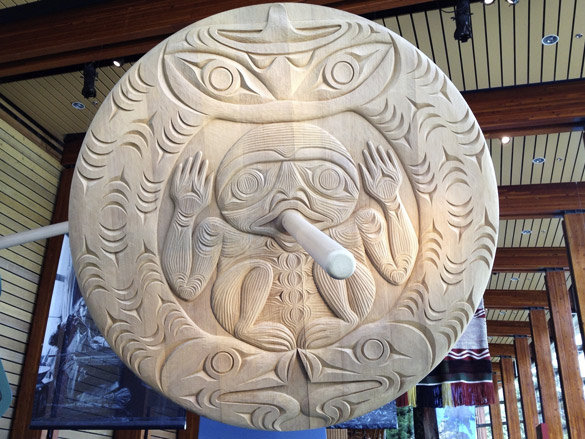
A huge carved and rotating wooden disk, one of two overhead to greet visitors as they come in the main entrance.
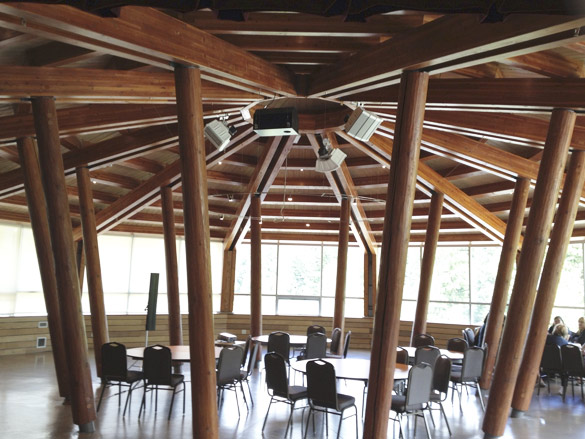
Note the inspiration from First Nations architecture in the Istken Hall.
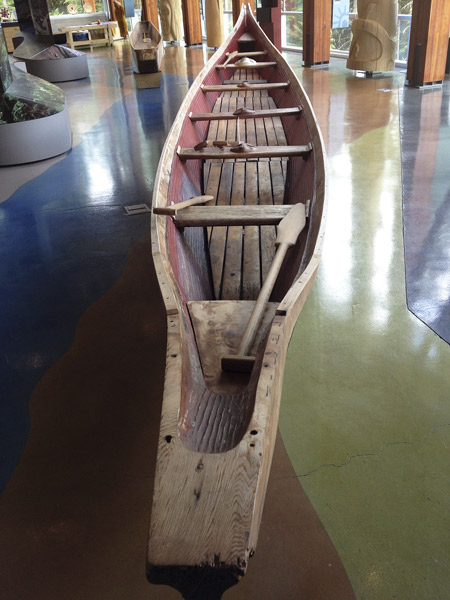
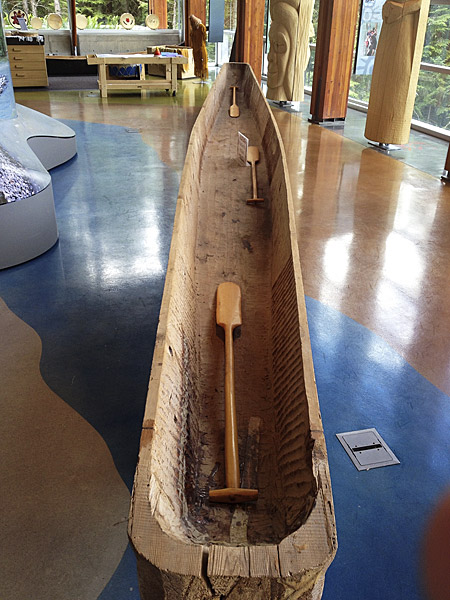
One style of boat is for the sea-going people and the other for the inland river fishing tribes.
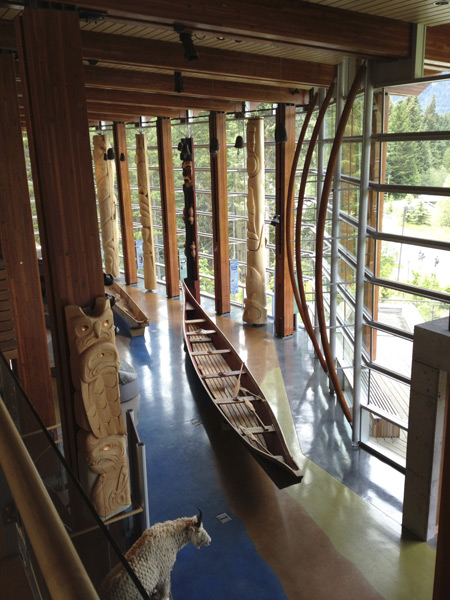
A view of the Great Hall from upstairs.
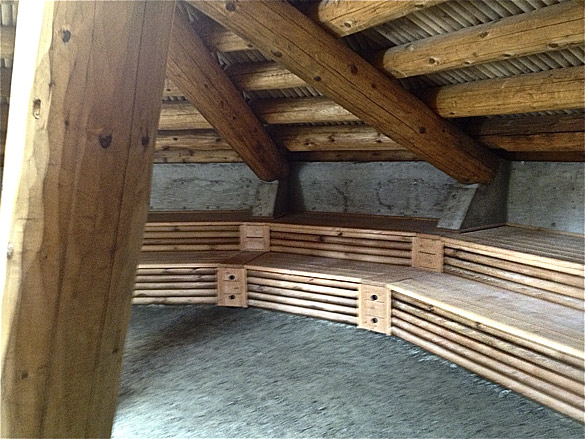
A re-creation of the Pit House which is normally underground. Note the benches where each family member had his or her own sleeping spot.
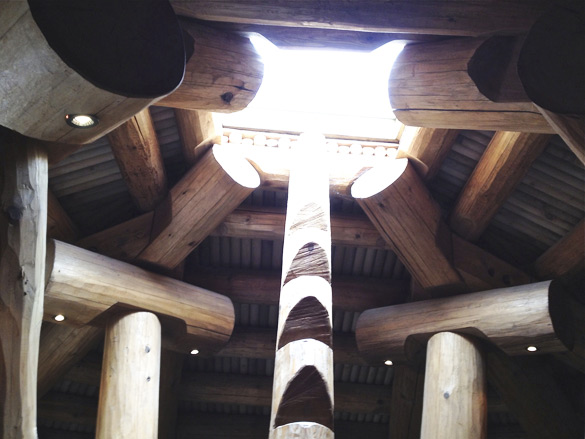
There is an opening in the top of the house to allow smoke to leave and was also the entry/exit with a notched pole as a ladder.
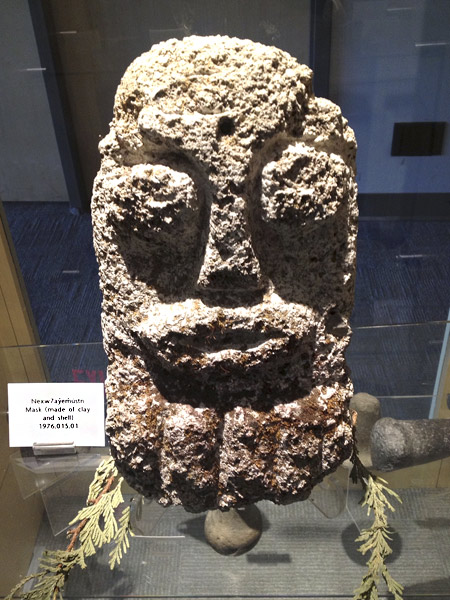
A clay and shell mask, one of many artifacts in the museum area.
I also enjoyed learning more about the BC Aboriginal legends and symbology on their website. You may like to view a short video and slide show which gives a better idea of the Centre than our few photos.
Added later: If you’ve missed the earlier posts in the slow road series and would like to visit them, they are here:
part 1, part 2, part 3, part 4, part 5, interlude and part 6.
July 21, 2013 in Canada and BC, Culture, History, Other artists by Marja-Leena
Such beautiful, functional art. I was wondering whether the ‘not-quite-straightness’ of the boat was deliberate (a way of off-setting a veering to the right as a result of paddling), or whether it comes from the natural shape of the tree.
In some ways, of course, these pictures remind me of similar Maori structures we saw in New Zealand.
Tom, that is an interesting observation. I didn’t notice or really focus on the ‘not-quite-straightness’ at the time. The second boat is actually one that is still being carved. I wish I’d taken notes of the guide’s fascinating stories, at least later that day for there are a lot of details I’ve forgotten in the month since being there.
I’ve noticed many similarities to Maori culture though I’ve not been to NZ.
That chap is clearly smoking with some relish a large cigarette.
Joe, it sure looks like it, eh! Because the other piece next to it also has one, I think it may be part of the mechanism that makes them slowly rotate. I like your funny interpretation better.
By the way, Joe, I hope you are back to see this – I am unable to comment on your blog. I’ve tried three times but it won’t publish….
I watched the first of the videos you linked to and see you got pictures of most of the exhibits shown on it. It looks to be a very beautiful place, certainly as majestic as the museum in Victoria.
Jer and I were talking today about how sad it is that even our heads are full of idiotic advertising jingles rather than the wisdom of our ancestors. It’s so much worse in many ways for kids today so we can only hope some wisdom can be absorbed from such places.
Susan, I’m glad you agree it is majestic like Victoria’s. I am also thinking of the UBC Anthropology Museum in Vancouver.
Wise words indeed about today’s silliness compared to the wisdom of the elders being taught in places like this.